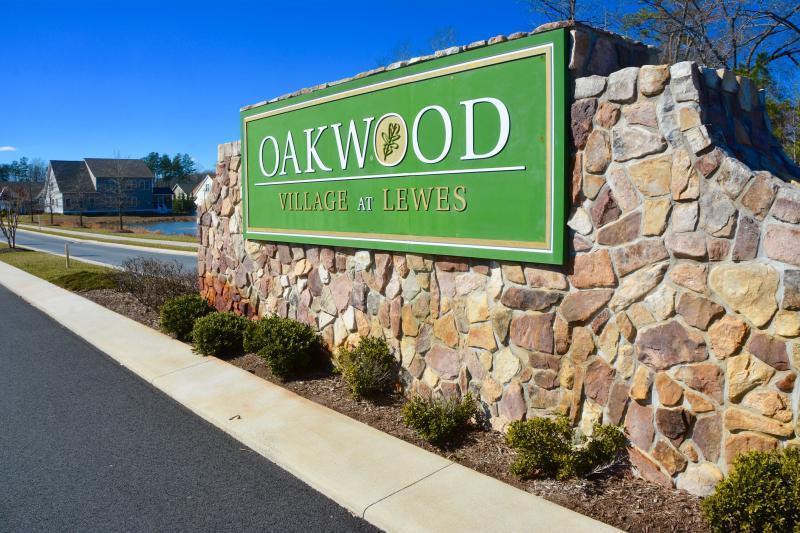For years, Oakwood Village resident Douglas Olson has been saying the community's stormwater management system is inadequate, and runoff is flooding land outside the community. Now, the Court of Chancery agrees.
In a lawsuit filed by adjacent property owners Lee and Mary Lee Robinson against five defendants, Vice Chancellor Sam Glasscock ruled the property owners have suffered material damage from Oakwood Village water runoff.
“Oakwood Village LLC is responsible for a trespass and nuisance on the Robinson property,” Glasscock said.
However, the judge said he ruled only on liability in the case; he's left it up to the plaintiffs and defendants to “to settle the request for equitable relief.”
“Once equitable relief is in place, I can determine damages from the parties’ citation to the record as it now exists,” he said.
The judge said he's hopeful the two parties can reach a compromise that would negate further litigation.
Glasscock wrote: “I find by a preponderance of the evidence, including the correspondence of the healthy and dead trees to the extent of standing water, that damage to the trees was caused by the increased discharge. I also find that the Robinsons’ ability to use and enjoy their property has been diminished by the increased discharge. I find that the Robinson property is being damaged such that Oakwood Village’s increase in discharge is not reasonable....”
Olson, a retired lawyer who specialized in construction and hydrology cases, said officials were aware of a problem more than a decade ago. A March 9, 2006 letter from Sussex Conservation District officials warned the Oakwood Village drainage plan was so inadequate that part of the Robinson property along Wil King Road near Lewes would be flooded.
Olson said the owner of the land is liable, which is currently the developer. But, eventually the Oakwood Property Owners Association will become owners of common property. “Because the nuisance is continuing, there will always be potential liability for any owners of the land,” Olson said. “With the water problems we have, all residents potentially have claims.”
Olson fears that the developer will try to turn the problem over to the homeowners association, leaving residents the bill. “My fear is that they will call a meeting and tell us we now have the liability for the fines and to fix the drainage issues,” he said.
Flooding an issue in the area
Olson said the community is in a bowl that collects runoff from other areas. He said lands east of Beaver Dam Road and south of Wil King Road drain into a swamp north of the community and swales convey the water into Oakwood Village ponds. He said water has overflowed the ponds onto the streets on three occasions over the past six years. “The flooding has been worse as more hard cover has been added,” he said.
And, he says, the community has not yet been hit by a major storm.
Olson said the community was built on a swamp. “They filled in 6 feet of dirt to raise the ground up,” he said.
Case has long history
According to court records, the Robinsons first noticed excessive water runoff near a walking trail on their property starting in 2014. In July 2014, following a storm, water flowed over a silt fence with such force that it cut trenches and swales on the Robinsons’ property. Oakwood Village was cited by the Delaware Department of Natural Resources and Environmental Control for stormwater violations and eventually was fined two years later.
More than a decade ago, Lessard Builders, the developers who started the Oakwood project in the early 2000s, tried but failed to purchase the Robinson property for $4 million and also failed to obtain a stormwater management easement, according to court records.
A 2005 review of the stormwater management plan by Sussex Conservation District pointed out numerous problems including where runoff would eventually discharge.
Following changes to the original plan, a final stormwater management plan was approved in December 2006 and construction began in September 2007.
Even with changes, Glasscock said all discharge from the community ends up at one retention pond – Pond 4 – which is directly adjacent to the Robinson property.
A Jan. 27, 2006 letter from the Sussex Conservation District states that post-development discharges must be less than existing discharges.
At the beginning of the project, according to court records, the Robinsons worked with the developer, and they were told there could be less water runoff onto their property.
Glasscock noted the plaintiffs seek damages for the loss and enjoyment of certain parts of their property, compensation for killed trees and tree removal, spoilage of their well for drinking water and mental anguish. Glasscock wrote: “I find that the plaintiffs have failed to show by a preponderance of the evidence that they are entitled to recovery for damages to their well-water or for mental anguish. The quantum of damages for damage to timber and loss of use await further proceedings.”
Oak Crest Farms, a neighboring community, has also had drainage issues. Sussex County officials had to step in and call in a $410,000 letter of credit to remedy issues in the community along Beaver Dam Road. Olson's home is a short walk from homes in Oak Crest Farms.


















































